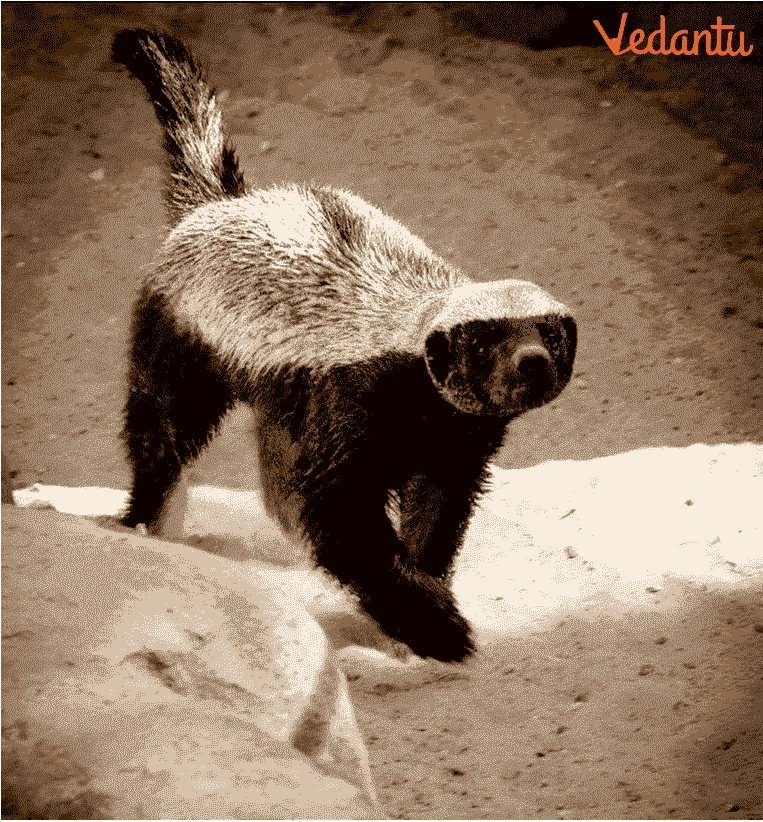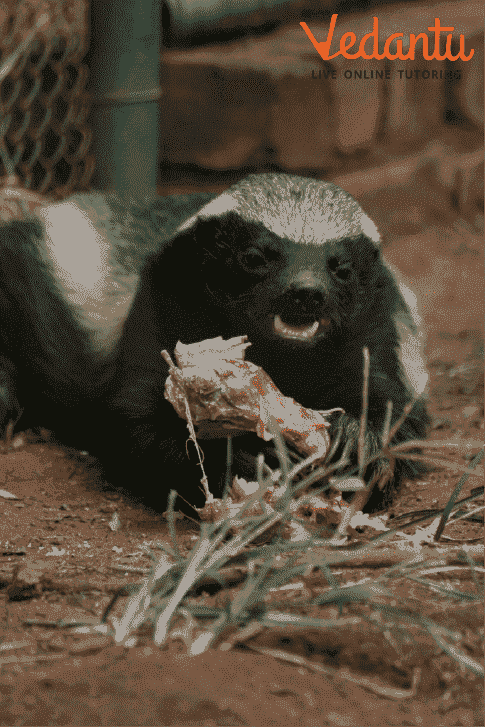




Why Honey Badgers Matter: Key Concepts Explained for Students
Honey badgers are related to skunks, otters, ferrets, and other badgers. Honey is the ratel's preferred meal, thus the nickname honey badger. They devour honeybee larvae.
This animal has a stocky, flattened body, short, powerful legs, and large front claws for digging and defence. Honey badgers have thick, dense, black fur with a broad grey-white stripe from head to tail.

Honey Badger
Is it skunk-like? The honey badger's tail gland contains an equally smelly substance as its look-alike. The stinky material is used to mark territory, but if scared or threatened, the honey badger throws a "stink bomb" Honey badger odour doesn't persist as long as skunk's, but it still says, "Leave me alone!"
Who is a Honey Badger?
Honey badgers are tiny, hardy mammals. It's a weasel, like a skunk. Honey badgers are Mellivora capensis. Honey badgers live in African and Asian forested environments. Their muscular front legs dig their holes.
Adult honey badgers have 12-inch shoulders (30 centimeters). Their bodies are 24 to 30 inches long, with 8 to 12-inch tails (20 to 30 centimeters)—bigger than men's. Honey badgers are robust and densely skinned. Poorly formed ears. White on top, black on the bottom.
Night-active honey badgers. Scorpions, termites, and worms are their food. Porcupines, rabbits, turtles, and snakes are their prey. Honey badgers pursue a little bird for honey and bee larvae. Honeyguides consume beeswax and larvae. Honey badger glands stink. Honey badgers utilise their scent to repel bigger animals.
What do Honey Badgers Eat?

Honey Badger Eating
Honey badgers are the most generalist when it comes to what they eat. Honey badgers can hunt at any time of day in places that haven't been developed, but they only hunt at night in areas with a lot of people. Honey badgers trot with their front toes turned in when they are hunting. They move at the same speed as a young man.
Even though they are called "honey badgers," they mostly eat meat. They will also eat dead animals, small rodents, birds, eggs, insects, lizards, tortoises, and frogs. They will eat berries, roots, and bulbs, among other fruits and vegetables.
They may dig into the burrows of frogs and rodents like gerbils and ground squirrels to catch them. Because their jaws are so strong, honey badgers can quickly eat tortoises. They kill and eat snakes, even ones that are dangerous or big. In India, they have found the bodies of people. They eat everything about their prey, including the skin, hair, feathers, flesh, and bones. They hold their food down with their forepaws while they eat. They move rocks or pull bark off trees when they want to eat plants.
Where Do Honey Badgers Live?
Honey badgers live alone in holes they dig for themselves. They are good diggers and can dig a 10-minute tunnel through hard ground. Most burrows are 1–3 meters long and have only one tunnel and a nesting chamber. They don't put anything soft in the nest.
Honey badgers are smart and are one of the few animals that can use tools. In the 1997 documentary Land of the Tiger, a honey badger in India was seen using a tool. The animal rolled a log and stood on it to reach a kingfisher chick stuck in the roots coming down from the ceiling of an underground cave.
Honey Badger Facts
Badgers are called "boars" for men and "sows" for women. Badger cubs are the young ones.
The word for "digger" in French is "bêcheur," which is where the name "badger" comes from.
Badgers don't bring food into their burrows because they like to keep it clean. Even outside the setts, they have something like public toilets.
Badgers sleep at night.
Cete is the name for a group of badgers.
They can run up to 19 miles per hour for a short time.
Conclusion
Badgers are important predators because they can dig like no other animal. Since badgers eat mostly mammals that live in burrows, they can dig like no other animals. Badgers have strong claws and legs that help them dig tunnels and find food underground.
In many countries, people go badger hunting for fun. Badgers are hunted for their fur, which has been used to make shaving brushes for a long time. This is because the fur is very good at keeping water in it.
FAQs on Fascinating Facts About the Honey Badger
1. How are honey badger's relations with people?
Honey badgers kill a lot of chickens that people raise to eat. Because they are strong and won't give up, keeping them away is hard. They have been known to pull thick planks out of chicken coops and dig under stone foundations.
2. How is a honey badger’s skin?
The honey badger skin is tough and loose. Their skin is hard to break, and they can twist and turn on their attackers because it is loose. The neck can safely hold honey badgers. The skin can withstand machete strikes. As their skin is resistant to arrows and spears, the only way to kill them swiftly is with a club or a powerful rifle.
3. What kind of fur does the honey badger have?
It grows a long coat with coarse, bristly hairs in winter. On the side, belly, and groin, there are fewer hairs. Summer fur is shorter, with fewer hairs, and the stomach is almost naked. The sides of their heads and the bottom of their bodies are all black. A large white band covers their upper bodies from the top of their heads to the base of their tails.





















